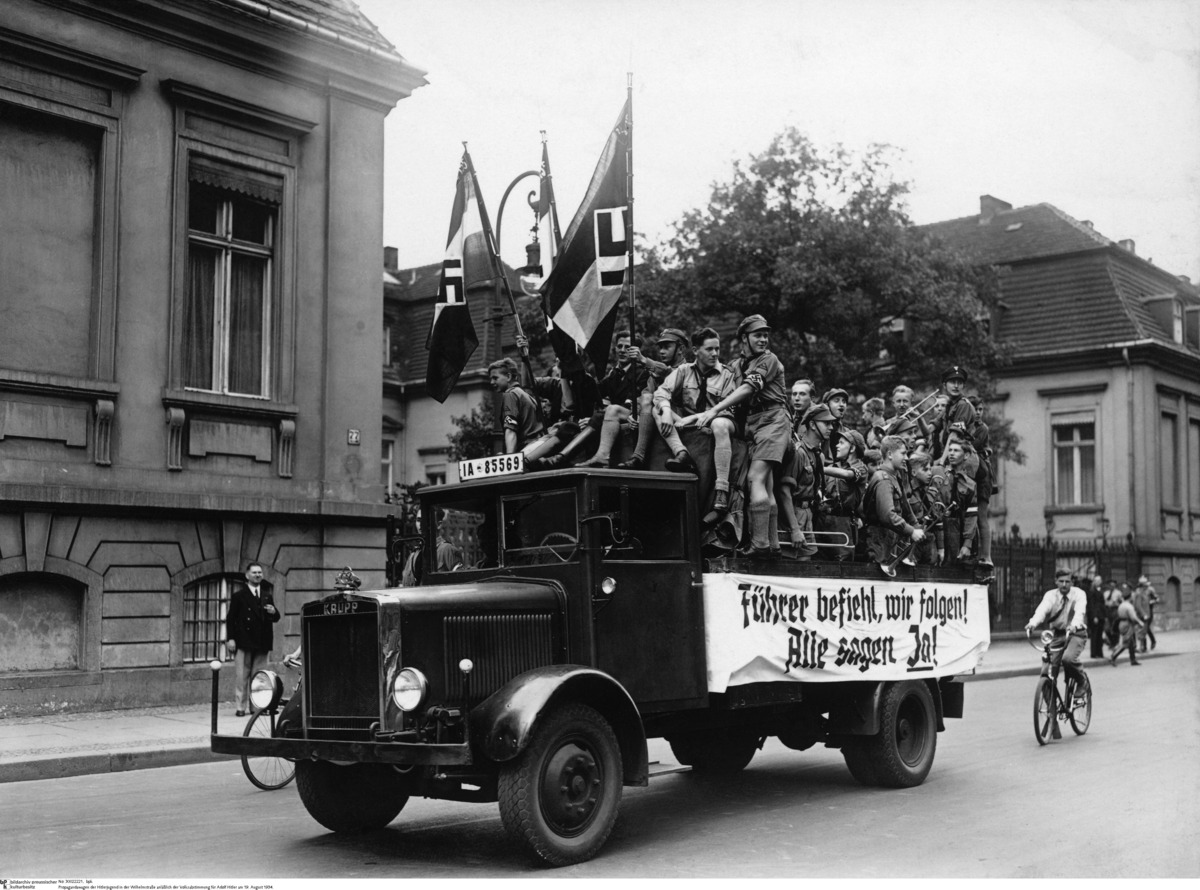Abstract
By the summer of 1933, Hitler had destroyed the constitutional,
parliamentary, and federalist bases of the Weimar Republic and had
created the basic structure of his Nazi dictatorship. He had combined
the legislative and executive powers in his own person, and had largely
brought the judiciary under his control as well. Hindenburg was becoming
increasing feeble in both mind and body, and no longer exerted any
significant influence on him. After the aged Hindenburg died on August
2, 1934, there was nothing to prevent Hitler from ruling alone. On the
preceding day, Hitler’s cabinet had already decided to merge the offices
of Reich President and Reich Chancellor, a move confirmed by a
referendum on August 19, 1934. From that point on, Hitler bore the title
“Führer and Chancellor of the Reich.”
